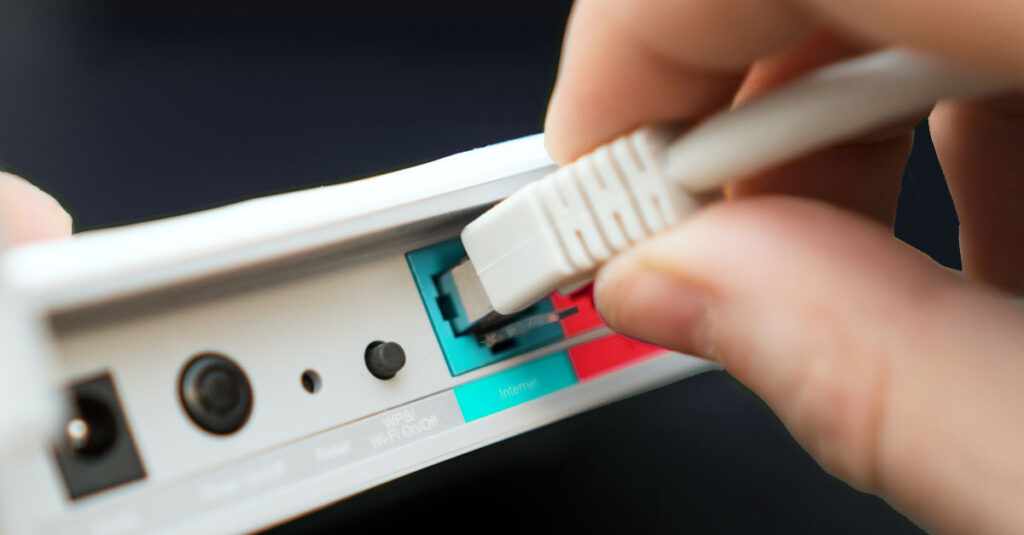
Should I Ever Reset My Network Settings?
Modern technology can be fickle. One moment you’re talking away on a Zoom call or happily watching Netflix on your smart TV, and the next, you’re staring at a connection error message and struggling to get back online. These kinds of minor tech hiccups are just a part of life, and fixing them is normally quick and easy: If things don’t start working again within a few moments, you turn your device off and then on again. Problem solved!
Sometimes, though, a simple reboot doesn’t fix the problem. In this case, you may need to do a bit more network troubleshooting and may even have to perform a full reset of your network settings. Don’t worry—while it sounds like a big deal, it really isn’t. Here’s what you need to know to reset network settings on all your devices.
Note: Before doing anything wild, use Downdetector to check that there isn’t an internet outage. There is no point troubleshooting your connection if service is down for everyone.
Start with a restart
Seriously, 9 times out of 10, rebooting whatever device is giving you trouble will fix the issue. If the problem is with your internet connection, before trying anything else, you should see if turning your device off and on again will fix things.
If only one device—like your smartphone or smart TV—is struggling to connect to the internet, then that’s the one you need to reboot. For portable devices like smartphones and laptops, shutting them down and turning them on again will typically work. For devices like TVs that go into standby mode when you press the power button, you may need to unplug them from the wall to fully restart them.
If all your devices are struggling to connect to the internet, then you may need to reboot your router. In this case, unplug it from the wall and wait a few minutes. Plug it back in and let it power up normally. After a few minutes, your devices should connect to your network and start working again.
If you’re curious as to why rebooting is so powerful, we have a full guide on why restarting your devices solves so many problems.
What does resetting network settings do?
On most devices, resetting the network settings deletes all the internet, local network and paired device settings it has saved. This isn’t a factory reset and none of your files will get deleted. Just the configuration settings for any kind of wired or wireless network.
These can include:
- Wi-Fi network names and passwords
- Paired Bluetooth devices
- VPN settings, cellular network settings and other mobile data settings
Basically, this forces your device to reconfigure itself to your Wi-Fi network. If there’s something weird going on in settings or any other kind of mismatch that has crept in, this will clear it.
However, this also means that if you reset the network settings on your smartphone, you’ll need to reconnect to all the Wi-Fi networks you use regularly—as well as any Bluetooth devices, like your headphones or a fitness tracker. Similarly, if your work has installed a VPN on your smartphone or laptop, you may also need to ask the IT department to reconfigure it.
While none of this is super hard to do, it can be a bit time consuming, which is why we recommend trying a reboot first!
Resetting the network settings on your devices
Resetting the network settings can fix a lot of device connectivity issues. To make your internet troubleshooting easier, here are links to guides for some of the most popular devices:
- How to reset network settings on an iPhone
- How to reset network settings on an Android phone
- How to reset network settings on a Windows PC
- How to reset network settings on a Mac
- How to reset network settings on a PlayStation 4
- How to reset network settings on a PlayStation 5
- How to reset network settings on an Xbox Series X/S
- How to reset network settings on an Xbox One
- How to reset network settings on a Nintendo Switch
Not all devices have the option to purge all your network settings at once, but there is always some kind of option to reset a connection. If the device you’re trying to reset isn’t listed above, check out the user manual or search online to find a guide.
Resetting the network settings on your router
If the problem is with your router and not an individual device, things can be a bit more complicated. Contact your internet service provider for advice on how to troubleshoot and factory reset your router and modem. You may need to reconnect all your devices to your network, especially if you changed the router password. Also, if you modified any of the default internet settings, say, for example, to add parental controls, you’ll need to reconfigure them again.
Frontier Fiber is built for the way you live today—and tomorrow
If you’re still on the lookout for the right ultrafast internet connection for streaming, gaming, working from home and running your smart home—all with enough bandwidth for everyone—find out about Frontier Fiber. Frontier Fiber is available in select areas — check here to see when it’s available at your address. Once you have it, keep your identity and devices protected with Frontier’s security support.
Product features may have changed and are subject to change.



